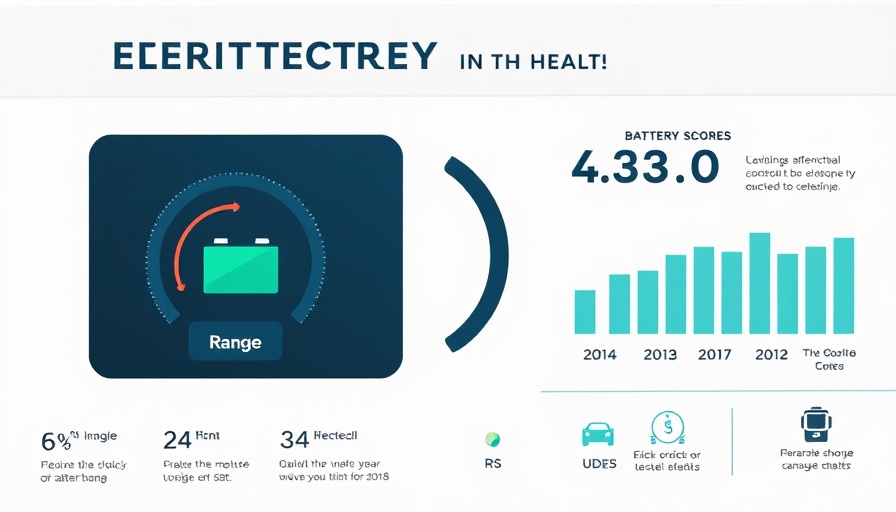
Revolutionizing EV Shopping: Autotrader’s Battery Health Scores
In a crucial step for electric vehicle (EV) enthusiasts and potential buyers alike, Autotrader has announced the introduction of battery health scores to its listings. This innovative approach not only aims to enhance consumer confidence but also provides a comprehensive overview of the condition of EV batteries. Battery health is paramount for used EV shoppers as it directly influences both performance and safety.
Why Battery Health Matters
As the electric vehicle market expands, understanding the intricacies of EV battery performance becomes increasingly important. Just as smartphone batteries degrade over time due to usage, the same holds true for electric vehicle batteries. Autotrader’s initiative seeks to educate buyers on the implications of battery health, helping them make informed decisions.
The Economics of Used EVs
According to Autotrader's executive editor Brian Moody, used EVs hold a wealth of advantages—lower costs, energy efficiency, and eligibility for government incentives among them. These factors make them a viable choice for consumers considering both their wallet and environmental impact. However, a major concern often arises regarding battery reliability. With battery health scores, buyers can gain insight into a specific vehicle’s condition before committing to a purchase, potentially saving them from unexpected future expenses.
Industry Insights from the Department of Energy
The U.S. Department of Energy's National Renewable Energy Laboratory provides valuable benchmarks for battery longevity, indicating that modern EV batteries typically last between 12-15 years and 100,000-200,000 miles in moderate climates. These figures highlight the importance of effective battery maintenance, which may include practices such as optimizing charging habits and monitoring battery temperature.
Best Practices for Battery Longevity
To maximize battery lifespan, covering optimal charging practices is essential. Autotrader emphasizes the importance of keeping the battery charge between 20% and 80%. This habit, coupled with maintaining battery temperature—avoiding extreme hot or cold conditions—can dramatically enhance battery performance. Additionally, staying updated with over-the-air software updates ensures that the battery management system operates at its best, fostering a user-friendly experience.
Monitoring and Maintenance: Key to Performance
For current EV owners, awareness is crucial. Drivers should remain vigilant for signs indicating battery deterioration, such as slower charging rates or diminished range. Quick acceleration can further exacerbate the issue, with gentle acceleration recommendations promoting timely battery health. Regular inspections by professionals can also ensure the battery is functioning as intended.
Conclusion
As the automotive industry transitions toward a more sustainable future, initiatives like Autotrader’s battery health scores represent progress. It empowers buyers with crucial information that influences their vehicle purchase decisions. By bridging the knowledge gap around battery health, Autotrader is contributing significantly to the transparency and trust in the EV market.
 Add Row
Add Row  Add
Add 




Write A Comment